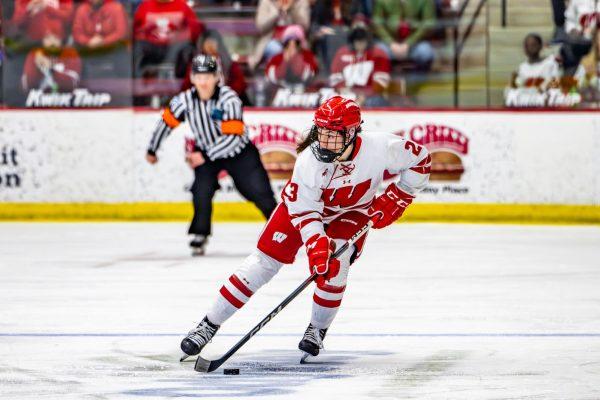Former Wisconsin men’s basketball guard Connor Essegian decided to leave Madison and enter the transfer portal in March, recently committing to Nebraska where he will play his next season. His decision to enter the portal was followed by former teammates Chucky Hepburn — now committed to Louisville — and AJ Storr, who is transferring to Kansas.
These moves appear amidst recent controversy surrounding the effects of the transfer portal on the culture and authenticity of college basketball, a system that needs to be altered to maintain a higher quality of collegiate athletics.
The transfer portal exists for a reason. Many athletes find themselves in a situation where they are being treated poorly by their coach, where they are unable to play at the level they want to or their school environment just isn’t working for them.
Being forced to stay in a toxic situation that a student committed to while in high school, without truly knowing what they wanted, could very easily create immense mental health issues. The transfer portal helps to give these athletes an exit strategy from that environment, allowing them to move to different teams to better suit their skills and desires.
Many student athletes also find they aren’t able to get enough playing time and want to develop as a player at a school that can give them a better opportunity to actively grow their skills, enhancing competition and allowing the players to elevate and improve their abilities. But while the portal can bring a lot of hope to athletes who need to change their environment, these benefits are outweighed by the misuse of the system and issues associated with it.
With the recent passing of Name, Image, Likeness policies, which allow college athletes to earn money through advertisements and sponsorships, many players have been entering the transfer portal to look for better NIL deals that support them financially.
These transfers, however, put smaller athletic programs at a significant disadvantage, according to Sports Illustrated. With the portal, bigger, more elite programs are able to poach players from the smaller, more mid-level programs with the appeal of more sponsorships and advertising opportunities. Creating a very unbalanced competition that sets the smaller schools at a severe disadvantage.
For the college athletes themselves, having the ability get NIL deals as well as transfer schools seems ideal. But it is completely changing the landscape of college basketball. Since the NCAA started to allow athletes to transfer one time penalty-free, the number of athletes in the portal skyrocketed from around 9,000 in 2021 to 12,000 in 2023. This opens the door for athletes to transfer after just one year, which both diminishes trust between the coach, the team and the athlete. This makes it challenging for the coaches to be able to develop athletes as players, which could reduce the overall quality of collegiate athletics.
When players enter the transfer portal at the first sign of adversity or only in search of a more lucrative program, this can hinder their own personal growth as a player. It also can prove as a challenge to their academics. Frequent transfers force players to adjust to new programs and schedules with different expectations. This can make staying on track academically difficult, as well as potentially create issues regarding eligibility and graduation.
Constant turnover also negatively affects team chemistry because there isn’t a sense of continuity and trust. Players need time to be able to learn how to work together and play as a team. If people are frequently coming in and out, it creates a disjointed unit that isn’t as effectively able to communicate and learn from one another.
There are also additional challenges placed upon the coaching staff. Coaches have to always be managing an ever-changing roster, which is a logistical challenge. They also have to invest immense time in monitoring the portal for transfers which takes away from high school recruits. Since coaches feel more compelled to recruit from the portal, they aren’t always invested in the development of newer players. All of this management and balancing act puts an intense stress and responsibility on the coaches.
While the idea of the transfer portal is beneficial for the athletes that need it, the way that it is currently oriented creates more problems than it solves. It promotes instability and over the course of time has changed the way college sports look. The issues it both creates and promotes have wide ranging effects that damage not only the athletes it is supposed to be helping, but also the programs and coaches instilled to support them.
Sammie Garrity ([email protected]) is a freshman majoring in journalism.























